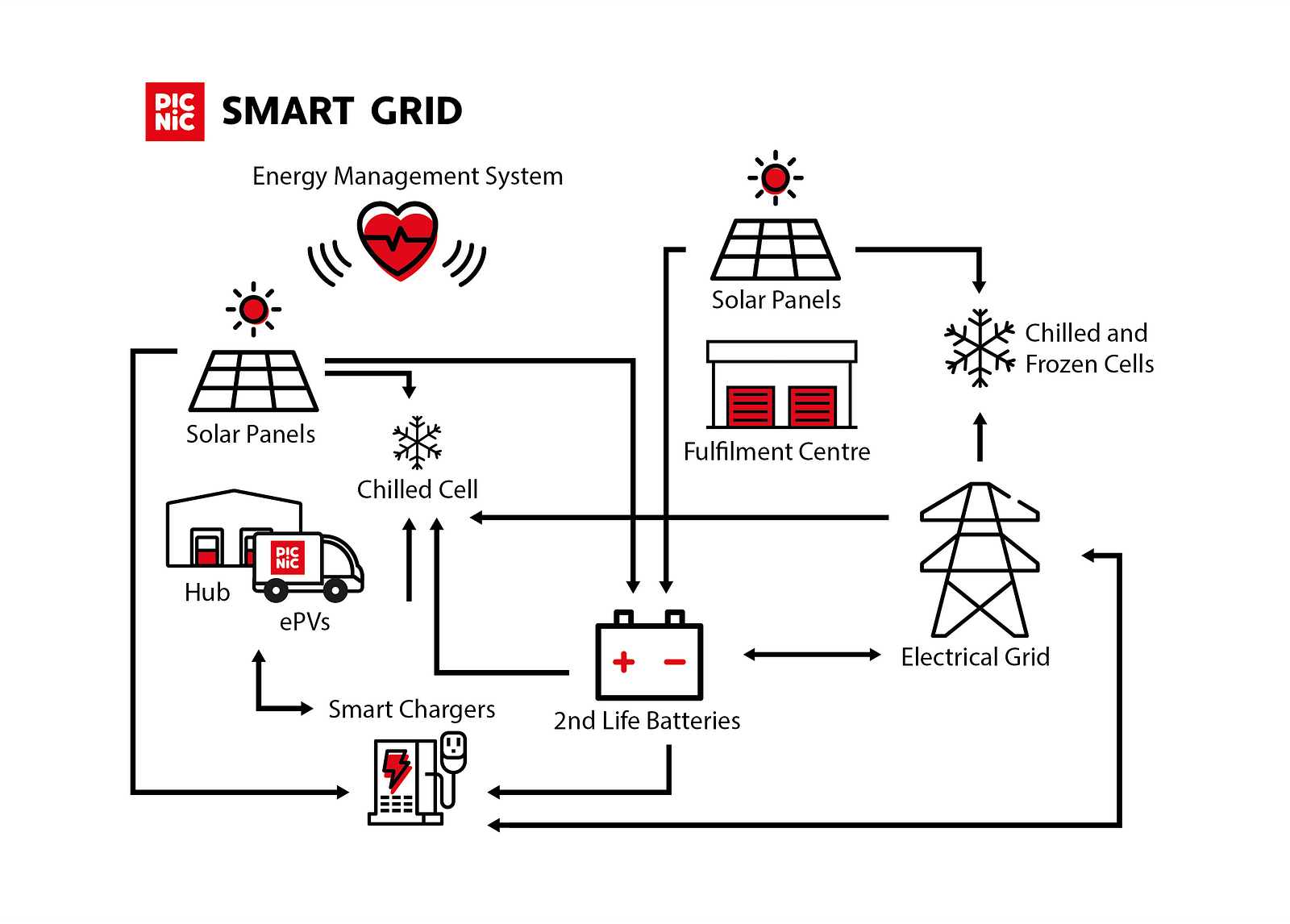Dutch e-groceries company Picnic is taking responsibility for decreasing the energy footprint. Picnic’s mission is to: maximise energy efficiency, source electricity from 100% renewables and ensure that energy is used when supply is high and demand is low. By discovering the potential of energy storage and using a large fleet of new electric vehicles in combination with solar energy, Picnic is making steps towards the global energy transition.
Smart grid
Making the energy transition has its challenges. Renewables do not constantly generate energy. On cloudy days, or at night, a company still need electricity but there’s no sun to charge solar panels. Therefore, an energy transition must go hand in hand with smart distribution that accurately plans energy use, and batteries that can store it for later.
Picnic has been awarded an energy grant from the Dutch government. In a project with ENGIE and Dexter Energy Services, Picnic will design a Smart Grid in the municipality of Rotterdam. The aim is to optimise Picnic’s energy use, and design a scalable energy model that can be replicated by other businesses. The pilot project will be the largest of its kind.
Electric powered vehicles
Picnic’s Amy Klein writes about in on Life’s a Picnic: “Our ePVs deliver to the doorstep, so customers no longer need to drive to buy their groceries. With an evolving distribution model we ensure that deliveries are efficient, further reducing Picnic’s energy footprint. But as a fully operational supermarket, Picnic is still a huge energy user. From our ePVs, to the large chilled and frozen cells that keep products fresh, we rely heavily on electricity. By connecting our large fleet of ePVs to an operating solar energy farm, there is great potential to optimise Picnic’s energy footprint”.
Smart Grid
A Smart Grid is an interconnected network between the energy consumer, energy storage, and energy production. With an energy management system that includes a digital toolbox of self-learning algorithms, demand is accurately planned, predicted, and coordinated, while responding to changing production. This creates efficient energy distribution and maximises the potential of renewable energy. Within the network, all components, from solar panels, ePVs, to smart chargers, constantly communicate with one and other.

As part of the pilot project, 160 ePVs will be equipped with smart batteries. These will harness energy harvested from the solar panels on the roof of a Hub. The ePVs are not in constant use. Between deliveries, or on non-peak days, ePVs remain plugged into the smart chargers, storing batteries with solar energy. At night, this energy can be redirected to wherever it is needed. That could be to frozen cells to keep our ice cream arctic, or potentially to other users that are connected on the same grid system.
Picnic’s Amy Klein: “Before we get there, there are some concrete steps we have to take. First, we have to minimise overall energy usage. By monitoring where and how energy is used, we can craft a detailed understanding to ensure that all energy is used efficiently. We have several large Fulfilment Centres and many Hubs spread across the Netherlands and Germany. That’s a lot of roof space, and there’s potential for a large solar farm. ENGIE is playing a pivotal role in the pilot project by sharing their knowledge about renewable energy, as well as providing the solar panels and the smart chargers.
Dexter Energy Services will add to the pilot project by working with us to design an effective energy management system. With the help of self-learning algorithms we will forecast energy usage and production. In this way, our Smart Grid can predict the most optimal time to use energy: when supply is high and demand is low.
Currently, it’s not always profitable for businesses to use energy wisely. There is a high cost in the necessary hardware, software and knowledge required, so many sustainability projects have to be supported by subsidies. While we experiment and develop ideas about how we can make Picnic more sustainable, we also want to see if our Smart Grid design is replicable to other businesses, and even if it can be scaled to cities. In this way, the pilot project will generate valuable knowledge and support for others who want to move away from fossil fuels”.
Source: Amy Klein of Life’s a Picnic
Photo: Picnic
